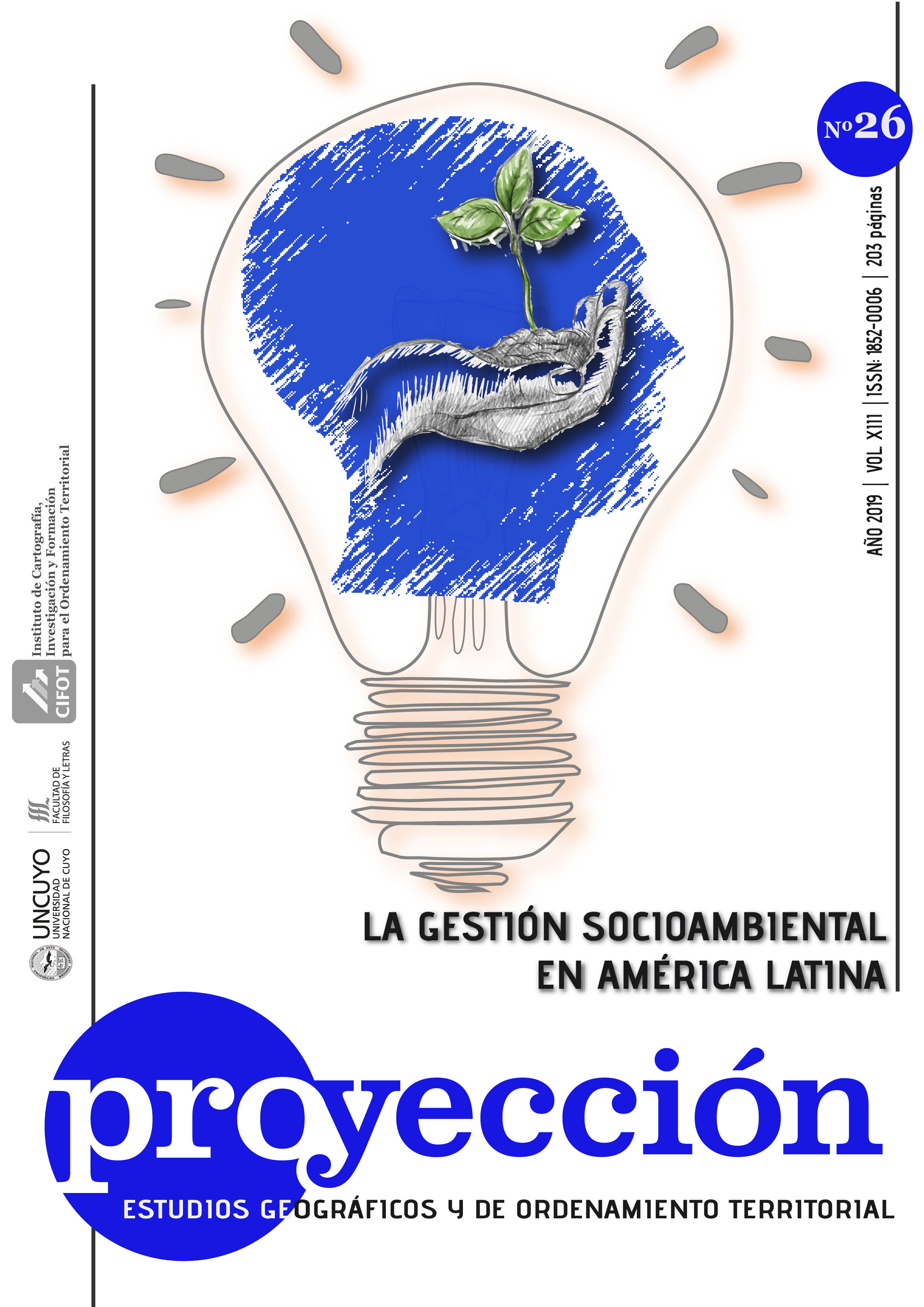Environmental Impact and Social Perception in Matlazincas Urban Park, Toluca, México
Keywords:
urban parks, social perception, conservation, managementAbstract
Urban parks face various problems related to the degradation of vegetation, disruption of biodiversity and contamination by solid waste, irregular human settlements, and even the conditions of violence and insecurity that occur inside them, which put at risk their aims of nature conservation and the welfare of the population. It is necessary to contribute to the generation of information on their current environmental conditions and the perception of the users, in order to contribute to taking of decisions for their proper management. Therefore, the purpose of the research was to analyze the environmental impact and the social perception in the Urban Park Matlazincas (in Spanish, PUM), located in the city of Toluca, Mexico, with the aim of formulating strategies for the environmental conservation and the social well-being. A cross-matrix of environmental impact was applied, which allowed to relate the elements of the environment with the activities carried out. In addition, 137 questionnaires were applied to visitors, with the aim of knowing their opinion on recreational activities; sports; environmental education; appreciation for art, culture, and science; religious practices; and sense of belonging. The main findings include the environmental problems caused by the introduction of vehicles, the presence of pets, and the inadequate disposal of solid waste. Likewise, although the population recognizes the importance of the park and is engaged in sports and recreational activities, it does not participate in the environmental activities that are currently offered. To conclude, it is necessary to strengthen the diffusion of the biological diversity, cultural, artistic, and recreational elements of the park, as well as to promote the participation of diverse social actors, in order to favor environmental conservation.
References
ARIAS-AGUILAR, A., CHACÓN-MADRIGAL, E., Y RODRÍGUEZ HERRERA, B. (2015). El uso de los parques urbanos con vegetación por murciélagos insectívoros en San José, Costa Rica. Mastozoología Neotropical, 229-237
CONAFOR (2017). Marco de Manejo Ambiental (MMA). Recuperado de: https://www.gob.mx/cms/uploads/attachment/file/457568/Marco_de_Manejo_Ambiental_MMA_2017.pdf
FLORES, R., GONZÁLEZ-GILLEN, M., Y SANTOS-POSADAS, H. (2010). Valoración económica del servicio recreativo del parque Hundido de la Ciudad de México. Región y Sociedad
FLORES-XOLOCOTZI, R. (2011). Actividades recreativas en el Parque Hundido del Distrito Federal (México). Estudios y Perspectivas en Turismo, 20 (4), 797-823.
FRUTOS, P., Y ESTEBAN, S. (2009). Estimación de los beneficios generados por los parques y jardines urbanos a través del método de valoración contingente. Urban Public Economics Review, (10), 13-51.
GARCÍA, S., GUERRERO, M. (2006). Indicadores de sustentabilidad ambiental en la gestión de espacios verdes. Parque urbano Monte Calvario, Tandil, Argentina. Revista de Geografía Norte Grande, (35), 45-57.
H. AYUNTAMIENTO DE TOLUCA. (S/F). Guía de recorrido. Documento inédito.
INEGI (2010). Inventario Nacional de Viviendas. Recuperado de: https://www.inegi.org.mx/app/mapa/inv/?fbclid=IwAR0N1hu0jxdR-bBmj2bt6x3vtHEwW1UzjVjR_zr60wwsz2Bb0iNDeW4vkJQ
LEOPOLD, L.B., CLARKE, F.E. HANSHAW, B.B., Y BALSLEY, J.R. (1971). A procedure for evaluating environmental impact. Geological Survey Circular 645. U.S.D.I. Washington, D.C.
MEJÍA HERNÁNDEZ, S. O. (2015). Rehabilitación del parque “El agüita”, en San Felipe Tlalmimilolpan, Municipio de Toluca. (Tesis de licenciatura). Recuperado de: http://ri.uaemex.mx/bitstream/handle/20.500.11799/49318/UAEM-FAPUR-TESIS-MEJIA%2cSANTA.pdf?sequence=1&isAllowed=y
MEJÍA, G. Y GÓMEZ, R. (2016). El impacto social en el parque público General Esteban Baca Calderón “La Loma” de Tepic, Nayarit, México. RICSH Revista Iberoamericana de las Ciencias Sociales y Humanísticas, 5 (9)
MORALES-CERDAS, V., PIEDRA, L., ROMERO, M., Y BERMÚDEZ, T. (2018). Indicadores ambientales de áreas verdes urbanas para la gestión en dos ciudades de Costa Rica. Revista de Biología Tropical, 66(4), 1421-1435
PÁRAMO, P., & MEJÍA, M. (2004). Los parques urbanos como oportunidades para la interacción de los niños con los animales. Revista Latinoamericana de Psicología, 36 (1), 73-84.
PINEDA-LÓPEZ, R., MALAGAMBA, A., ARCE, I., OJEDA, J. (2013). Detección de aves exóticas en parques urbanos del centro de México. Huitzil. Revista Mexicana de Ornitología, 14 (1), 56-67.
PLAZOLA CISNEROS, A; (1998). Enciclopedia de arquitectura. Editorial Plazola editores. Recuperado de:
RICO, J. C. (2004). El paisajismo del siglo XXI entre la ecología, la técnica y la plástica. Madrid: Ediciones Sílex.
RIVERA, L. (2014). Los parques urbanos como indicadores de calidad de vida, símbolos de bienestar y espacios de uso recreativo: una investigación en Bucaramanga (Colombia). Universidad y Empresa, 16 (27), 215-237.
SEDESOL. (2011). Lineamientos para el diseño e implementación de parques públicos de bolsillo. Recuperado de:
http://www.inapam.gob.mx/work/models/SEDESOL/Resource/1592/1/images/recreacion_y_deporte.pdf
SIEMENS AG. (2010). Índice de Ciudades Verdes de América Latina. Munich, Alemania. Recuperado de:
Downloads
Published
How to Cite
Issue
Section
License

This work is licensed under a Creative Commons Attribution-NonCommercial-ShareAlike 3.0 Unported License.
La revista Proyección establece las siguientes condiciones de publicación para los/as autores/as:
- Los/as autores/as conservan los derechos de autor y ceden a la revista el derecho de publicación bajo la Licencia Creative Commons Atribución-No Comercial-CompartirIgual 3.0 No portada (CC BY-NC-SA 3.0) que permite a terceros copiar, distribuir, exhibir y ejecutar la obra citando siempre la fuente y los datos de autoría según la norma prevista por la Revista Proyección. Esta licencia no permite el uso de la obra con fines comerciales.
- Todos los trabajos publicados por Proyección, Estudios Geográficos y de Ordenamiento Territorial serán bajo la modalidad de gratuidad para autores/as y lectores/as.










